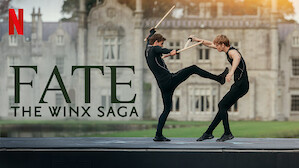

It was a senselessly violent crime: on a cold night in The first three novels in Henning Manning's Kurt Wallander series are now available in a trade paperback set. FACELESS KILLERS First in the Kurt Wallander series. Mystery fans across America are discovering the international bestseller Henning Mankell and his character Kurt Wallander, the veteran Swedish police detective. There is quite a bit of gore when describing the murders, but all in all the book was a worthwhile read and the relevance of the social commentary and intricate characterization made it worthy of being adapted to the small screen.The first three novels in Henning Manning's Kurt Wallander series are now available in a trade paperback set. “Faceless Killers” is definitely a book I would recommend to people who like mysteries, fiction or cop shows. Scandinavian authors may have everyone beat when it comes to writing about the grittier side of humanity. Although Mankell incorporated quite a few crime fiction tropes, none of the characters were too cheesy or stereotyped and his social commentary wasn’t overly blatant, though it did play an important role in the book overall. Mankell’s way with words, the intensity of the plot and the believability of the characters went a long way in making this book work. He puts more into the parts of the work that matters most in the long run. Readers get simple descriptions of countrysides or icy roads, but the crime scenes are detailed and Mankell describes every aspect of how the murderers pulled off their heinous crime. However, Mankell stops to describe important information. Sentences are short and efficiently describe the events of the book. Originally the work was written in Swedish then translated into English. “Faceless Killers” has an interesting readability to it as well. I liked the realistic aspect of this, because Mankell kept time moving without adding pages of useless information to the book and without seeming like he was leaving things out to shove readers into a new week or month. It takes time for him to get enough information and piece the clues together and determine who murdered the Lovgrens. Staying true to reality, Wallander doesn’t solve the case within a couple days, a week or even a month. There are several scenes in which Wallander is talking to his ex or thinking about other women, his father or his daughter, but they show the reader his humanity and aid in creating a timeline for the book to play out. Though perpetuating the divorced and depressed detective cliché, Mankell’s “Faceless Killers” twists it in such a way that develops the character and creates an overarching personal plot without seeming too forced or drawing too much unnecessary attention to that aspect. The tension leaves readers with the questions, “How are these murders connected?” and “Will Wallander pull himself together?” With racial tension running high, anti-refugee violence is starting to break out and another murder occurs. This clue is then leaked to the media which introduces another tricky aspect and puts more pressure on Wallander to solve the case, leaked information has caused the media to believe foreigners were the ones to kill the couple. However, the murdered wife left behind a cryptic clue, saying only the word “foreign” before she died. The first problem Wallander faces is that the murder isn’t cut and dry - the couple’s closest (and only) neighbors were too far to hear anything, slept through the murder and were unable to offer any information as to why anyone would want to kill a seemingly innocent couple living out a quiet life. The first in both the book and television series is “Faceless Killers.” Recently divorced detective, Kurt Wallander, is sent to determine who killed an elderly couple who lived on a farm deep in the Swedish countryside while trying to regain control of his personal life and break developing bad habits. The series ended back in 2016, but it is high time the books be given a second glance. BBC’s “Wallander” series is a television adaptation of Swedish author, Henning Mankell’s works. Where film goes, television is sure to follow. From “Black Panther” and its comic book inspiration to Jane Austen’s influences on “Clueless,” directors and producers are smitten with adapting these stories into blockbusters and, sometimes, using them to make subtle social comments.

For example, many popular movies and television shows were books first. When lacking inspiration, people often turn to books.


 0 kommentar(er)
0 kommentar(er)
